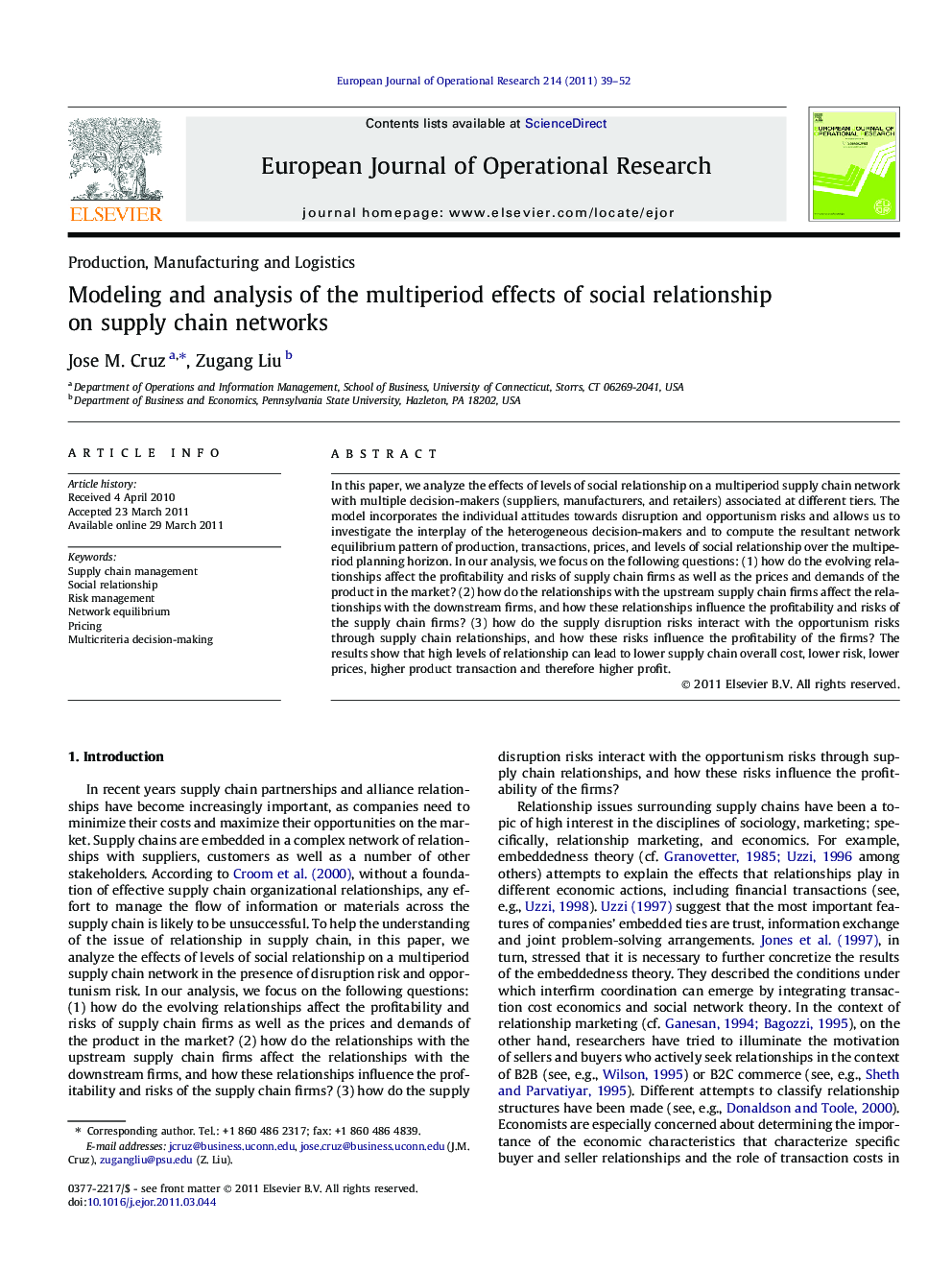| Article ID | Journal | Published Year | Pages | File Type |
|---|---|---|---|---|
| 478490 | European Journal of Operational Research | 2011 | 14 Pages |
In this paper, we analyze the effects of levels of social relationship on a multiperiod supply chain network with multiple decision-makers (suppliers, manufacturers, and retailers) associated at different tiers. The model incorporates the individual attitudes towards disruption and opportunism risks and allows us to investigate the interplay of the heterogeneous decision-makers and to compute the resultant network equilibrium pattern of production, transactions, prices, and levels of social relationship over the multiperiod planning horizon. In our analysis, we focus on the following questions: (1) how do the evolving relationships affect the profitability and risks of supply chain firms as well as the prices and demands of the product in the market? (2) how do the relationships with the upstream supply chain firms affect the relationships with the downstream firms, and how these relationships influence the profitability and risks of the supply chain firms? (3) how do the supply disruption risks interact with the opportunism risks through supply chain relationships, and how these risks influence the profitability of the firms? The results show that high levels of relationship can lead to lower supply chain overall cost, lower risk, lower prices, higher product transaction and therefore higher profit.
► We model the effects of relationships on supply chain network profit and risks. ► Establishing and maintaining relationship level induces costs, but may lower risk. ► Higher relationship lowers supply chain uncertainty and prices while increasing transactions. ► The longest the relationship, the highest its impact to cost and risk reductions. ► The time and locations of investments in relationship determine how risky supply chain is.
